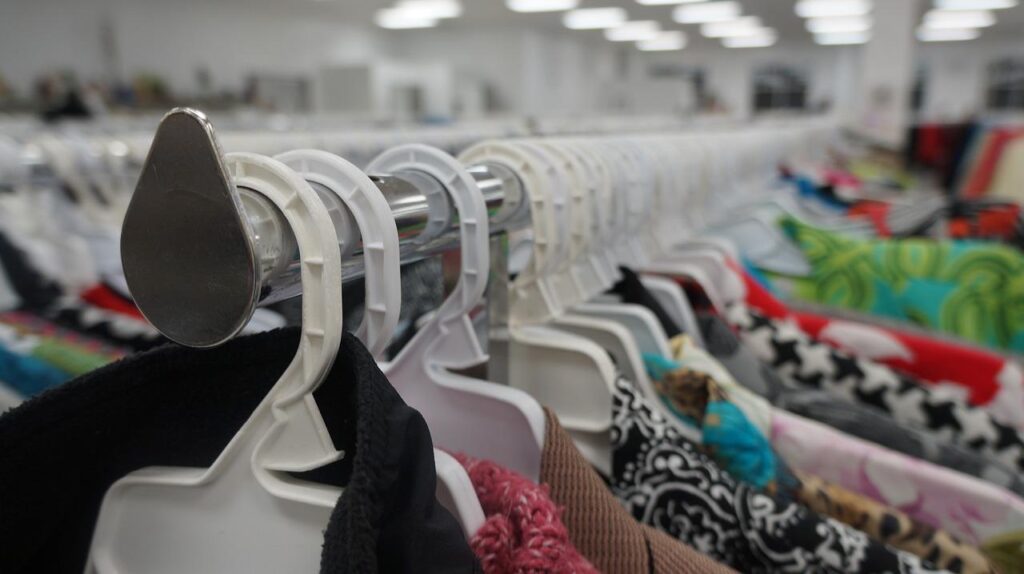
By Amanda James
For decades, thrift stores have been a way for people to find clothing that they might otherwise not be able to afford. Thrift stores had a simple and well executed process. First, someone will donate their old clothes. Second, the thrift store would price them and put them out on the floor. Finally, a person shopping at the thrift store would buy it and wear it themself. This simple process made clothing accessible for almost everyone as poor individuals were able to buy new clothes to them. It was like this for many years. But then something changed in this process.
The change started out relatively innocently: young people began shopping at thrift stores for fun. Not out of necessity, but because thrifting was trendy and cool now. Before this, shopping at thrift stores was something only poor people did and a shameful thing in society’s eyes. Kids would be bullied for it, parents might be embarrassed by it, etc. But when rich teenagers decided it wasn’t shameful anymore, it was the only “cool” way to shop. While yes, it was unfair and ironic for these kids that once bullied their classmate in middle school for it and now did it for fun in highschool, it was all the rage now. I personally didn’t really care because there is such a large amount of clothing that ends up in landfills, I was fine with anyone who wanted to, not just poor people, shopping at thrift stores. It wasn’t their only choice but if they wanted to, who was I to stop them when it wasn’t hurting anyone?
The issue came with the rise of Depop. What is Depop? Depop is an app where users can sell or shop used clothing items. Originally intended to be an online kind of thrift shop with people selling their own used clothing, it quickly became a market of gentrification for thrift stores. This happened when sellers started buying items from thrift stores to purposely resell immediately. They would buy a cool graphic tshirt for $5 and sell it for $20 on Depop. This is an issue in my opinion because it is no longer an individual person shopping at a thrift store for themself, but them shopping for hundreds of people online. This takes away options for people who actually need to shop at thrift stores due to their income and not because they want to make money off of it. Another problem is that the sellers sometimes are incredibly greedy with the up-charge amount. I would say a reasonable up-charge would about $10. You buy something for $10, you sell it for $20. I get it. But it really bothers me when sellers buy something for $10 and then claim it’s some super unique and special piece (when it’s usually not) and charge $100. That’s not fair to anyone. One twitter user posted an example of this by including a screenshot from Depop of one seller trying to sell a shirt that looked similar to a shirt Kristen Stewart wore in Twilight, claiming the shirt was “super rare and hard to find” and pricing it at $275 when the shirt itself is indisputably very basic and definitely not worth that much money.
I think this needs to stop if we want to go back to any sense of morality within a system like thrift shopping. The intended purpose of it was an amazing concept that allowed for anyone to find “new” clothes but it has become a money grab.
For more discussion on this topic, visit this article by Dazed.



Hi Amanda,
I found it interesting to read your post about Depop and thrift stores. I think that the internet is becoming very competitive about everything nowadays. Thrift stores offer something special, which is that you never know what you are going to find. I think that as of now, they still stand out as something unique. You can still try on the clothes that you are finding in thrift stores. Second-hand clothing takes on risks of not fitting. After something has been used, it has the risk of being smaller from being run through the wash and dryer multiple times. I believe that Depop will continue to be a great source of internet thrifting, and serves as an awesome competition.
Personally I thought of thrift stores as a gentrified version of thrift stores, I do acknowledge the impact of upper/Upper middle class kids going in and buying out clothes that were intended to be accessible for others. Although, this site I think allows people who are making their own clothes or those who have more expensive clothing they’d like to sale. although in recent years I do agree thrift stores have been gentrified and places like goodwill raising their prices in response perfectly reflects that.